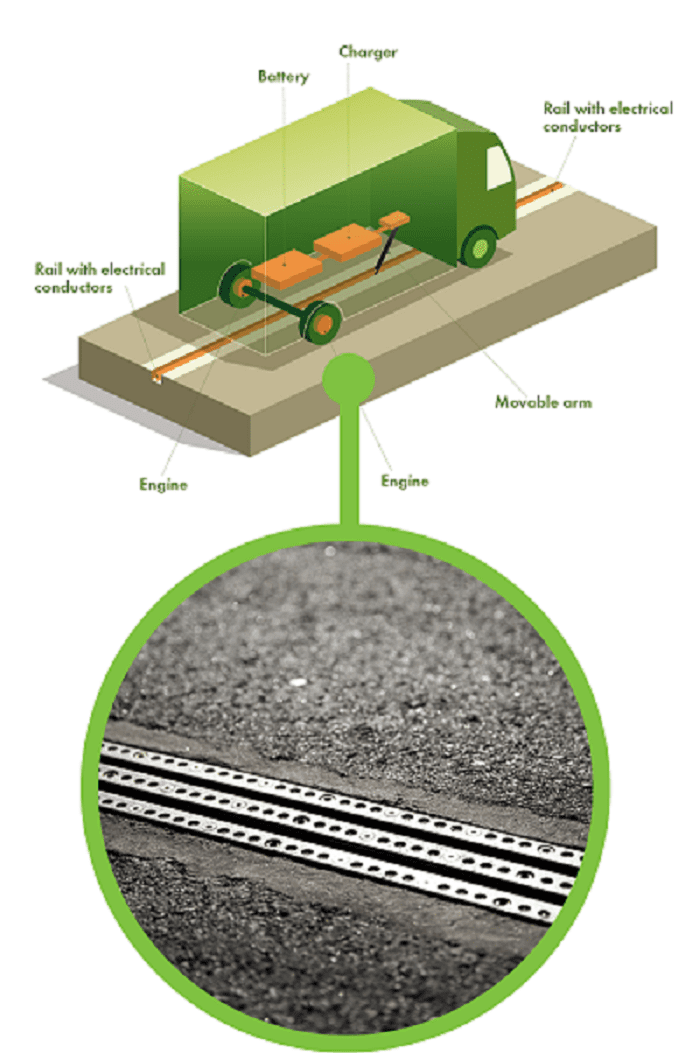This week marked the inauguration of eRoadArlanda, a Swedish innovation and the first road of its kind to allow both commercial and passenger vehicles to be recharged while driving. The solution, which is both sustainable and cost-effective, will allow existing public roads to be electrified and help to create a future of fossil-free road transport.
"One of the most important issues of our time is the question of how to make fossil-free road transportation a reality. We now have a solution that will make this possible, which is amazing. Sweden is at the cutting edge of this technology, which we now hope to introduce in other areas of the country and the world," says Hans Säll, Chairman of the eRoadArlanda consortium and Business Development Director at NCC.
Tomas Eneroth, Swedish Minister for Infrastructure, and Lena Erixon, Director General of the Swedish Transport Administration, were on hand at the formal inauguration ceremony for the road.
"It is important to break new ground when it comes to climate-smart road transport. That's why the Swedish Transport Administration supports innovative development projects that contribute to long-term, sustainable solutions," says Lena Erixon, Director General of the Swedish Transport Administration.
Approximately two kilometers of electric rail have been installed along public road 893, between the Arlanda Cargo Terminal and the Rosersberg logistics area outside Stockholm. The electrified road works by transferring energy to the vehicle from a rail in the road through a movable arm.
The arm detects the location of the rail in the road and as long as the vehicle is above the rail, the contact will be in a lowered position. The electrified road will be used by electric trucks developed as part of the project.
There are several methods of building electrified roads. Inductive technology involves a magnetic transmission of energy. Conductive technology allows for electricity to be supplied in two ways: contact from above through overhead lines or from below via conductors in the road. eRoadArlanda has chosen to test and develop conductive feeds from below, the method that we have deemed will have the greatest potential to succeed.
eRoadArlanda's technical solution transfers energy from a rail in the road to the vehicle, using a movable arm. The arm detects the location of the rail in the road and as long as the vehicle is above the rail, the contact will be in a lowered position. When overtaking, the contact is automatically raised.
The rail, which is connected to the power grid, also functions automatically. It is divided into sections and each individual section is powered only when a vehicle is above it. When a vehicle stops, the current is disconnected.
The rail enables the vehicle's batteries to be recharged while powering its passage. The system also calculates the vehicle's energy consumption, which enables electricity costs to be debited per vehicle and user.
About eRoadArlanda
The eRoadArlanda project is working to make electrified roads of the future a reality and is part of the Swedish Transport Administration's pre-commercial procurement of innovation. The solution is based on conductive technology that uses an electric rail installed in roads to power and recharge vehicles during their journey.
The project is being managed by a consortium comprising the following members: Elways, NCC, PostNord, ABT-bolagen, Vattenfall, DAF, KTH, Kilenkrysset, VTI, E-traction, GCT, KTH, Bilprovningen, Airport City Stockholm, Sigtuna Municipality, Swedavia, Arlanda Stad Holding, TraningPartner, FirstHotel, Frost Produktion, SMM Dulevo and Sandströms Elfirma.







